Social Media Traffic Capturer: Analyze the 10 projects with the fastest number of fans in a month
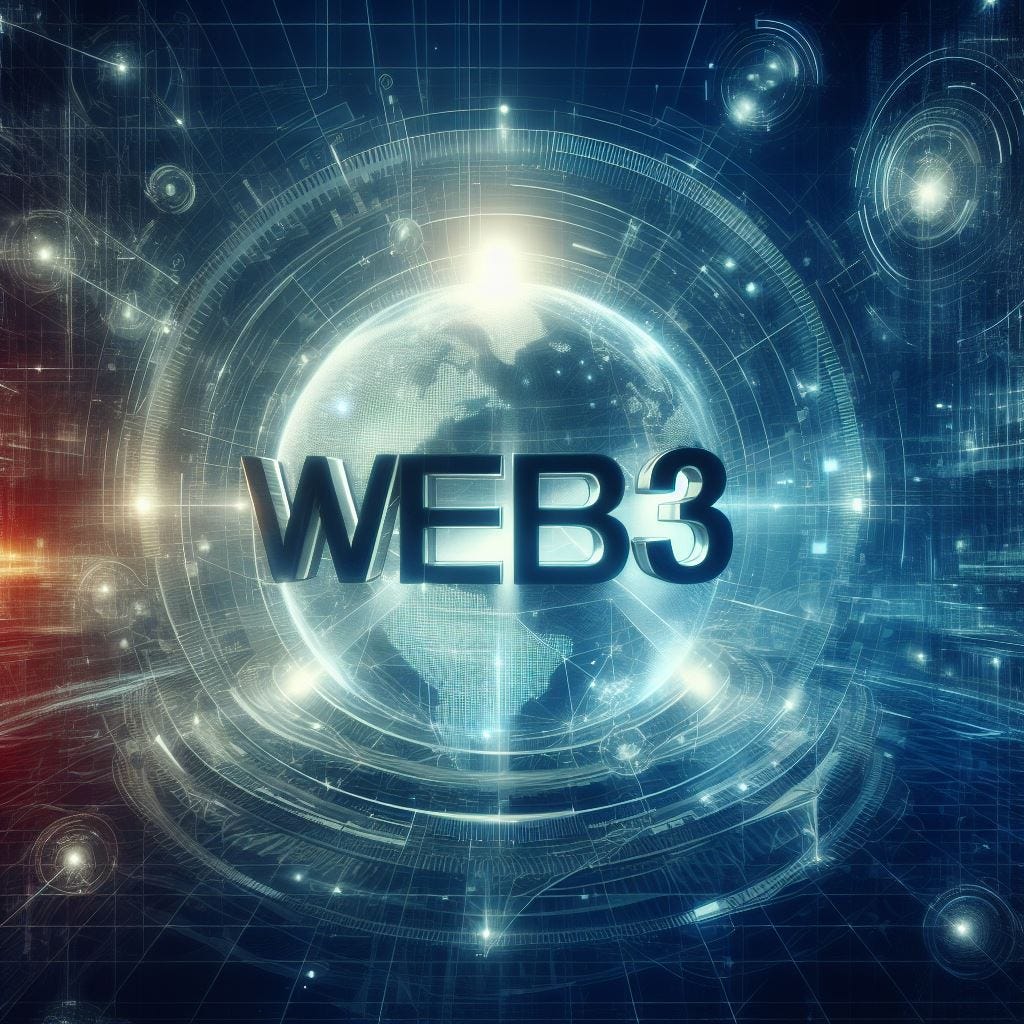
What if I told you that there is a new way of building and using the internet that is more secure, transparent, and fair than the current one? That instead of relying on centralized servers and platforms, you can connect directly with other users and access services that are powered by blockchain, cryptocurrency, and smart contracts? This is what web3 is all about.
IntroductionThe Internet, a global network of connected computer systems, first appeared in 1969 and has experienced many changes in technology and infrastructure since then. The Internet was originally created to exchange information, but it has become an essential part of modern life.
Tim Berners-Lee’s creation of the World Wide Web was a key factor in turning the Internet into a platform for accessing and sharing a huge amount of information, such as web pages, digital images, videos, and audio. Then the boom of social media brought a new way of using the web: users could interact with each other and play a more active role by creating content on these new platforms.
All this new inventions have caused the Internet populaton to surge: as reported by Hootsuite, in October 2022, 5.48 billion people were using the Internet, making up 68.6% of the world’s population. This number continues to grow by around 4% each year. While the Internet provides convenience, it also takes away our privacy and control over our personal data, in fact a handful of Internet companies have gained a monopoly on the market, dictating how we access information.
The entire evolution of the Internet has created the need for a decentralized solution that gives users more power and control over the Internet: Web3. To better understand what Web3 is, we should first take a look at the evolution of the Internet: from Web1 to Web2, and finally to Web3.
Web 1.0: Read-Only (1990–2004)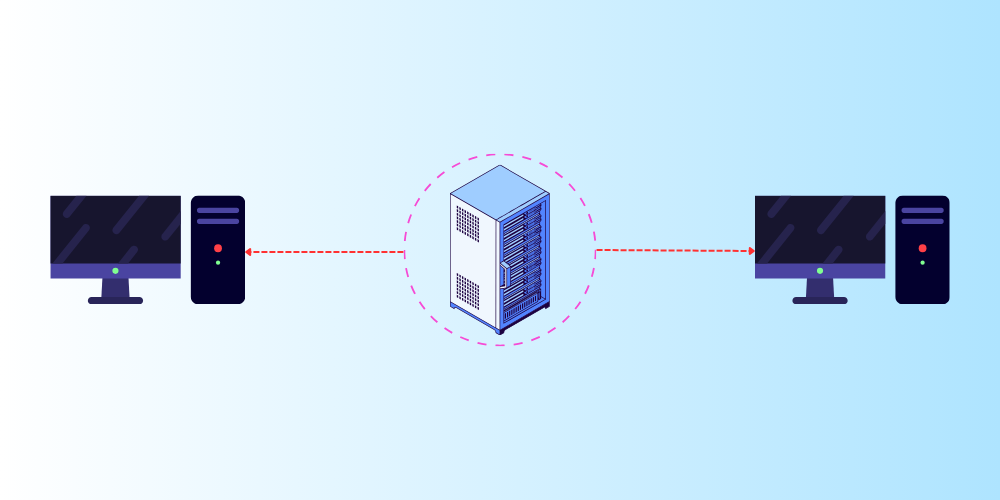 Read-only model
Read-only modelTim Berners-Lee, affiliated with the European Organization for Nuclear Research (CERN), pioneered the World Wide Web in 1989, now identified as Web1.0. This system comprises interconnected hypertexts accessible via the Internet. Commonly referred to as the “Read-Only Web,” it was characterized by limited interactivity and functionality. Websites of this era primarily offered static content and just provided informations to the users, lacking interactive features or design elements. Interaction was restricted to hyperlinking and text-based email communication, with no possibility of uploading images or attachments.
The World Wide Web became publicly available in 1991, and since then, it has become an indispensable tool for searching for information. Web 1.0 predominantly facilitated one-way transmission of information by professionals or companies through static web pages. During this period, Internet users mainly browsed web pages for information, with minimal engagement in commentary or content creation.Web 1.0 spanned approximately from 1990 to 2004, serving primarily as a content delivery network (CDN), where users consumed materials passively without offering feedback in the form of comments or reviews.
Representative entities of this period include Netscape and Yahoo.
Web 2.0: Read-Write (2004 — now)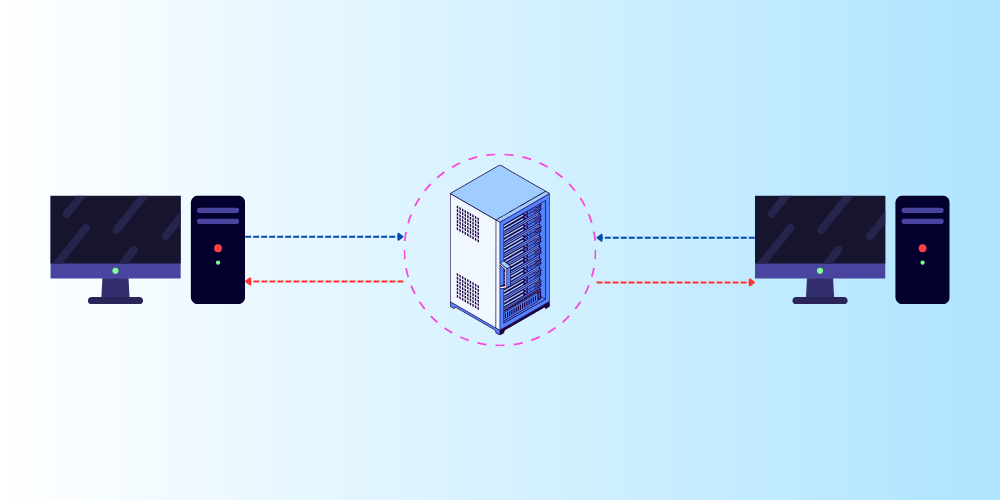 Read-write model
Read-write modelThe first Web 2.0 conference, initiated by Tim O’Reilly, was held in 2004. In conjunction with the rise of social media platforms, it marked the beginning of Web 2.0. Referred to as the second generation of the World Wide Web, Web 2.0 has evolved to dominate the digital landscape. This phase of the Web is characterized by increased user interaction, fostering the creation of user-generated content and enhancing interactivity and usability for end-users.
The advent of Web 2.0 has spurred the proliferation of various social media platforms, including Facebook, Twitter, and YouTube, enabling users to publish content and receive feedback from their peers. The widespread adoption of mobile devices such as iPhones and Android smartphones has further catalyzed the popularity of Web 2.0, facilitated by apps like WhatsApp, Instagram, Uber, and Paytm.
The surge in user numbers and the proliferation of user-generated content have catalyzed a paradigm shift in the Web’s function, transitioning from a mere conduit for communication and information retrieval to a dynamic platform for software applications and e-commerce. Consequently, Web 2.0 has earned the moniker “web as a platform.”
It is the Internet we are experiencing today where users started to move to centralized service platforms that could provide free services. In the era of Web 2.0, companies can own and share user-generated content and they empower users to interact with each other by posting, liking, commenting and other actions. Users have become both creators and consumers of content and instead of being read-only, the web has evolved to be read-write.Web 3.0: Read-Write-Own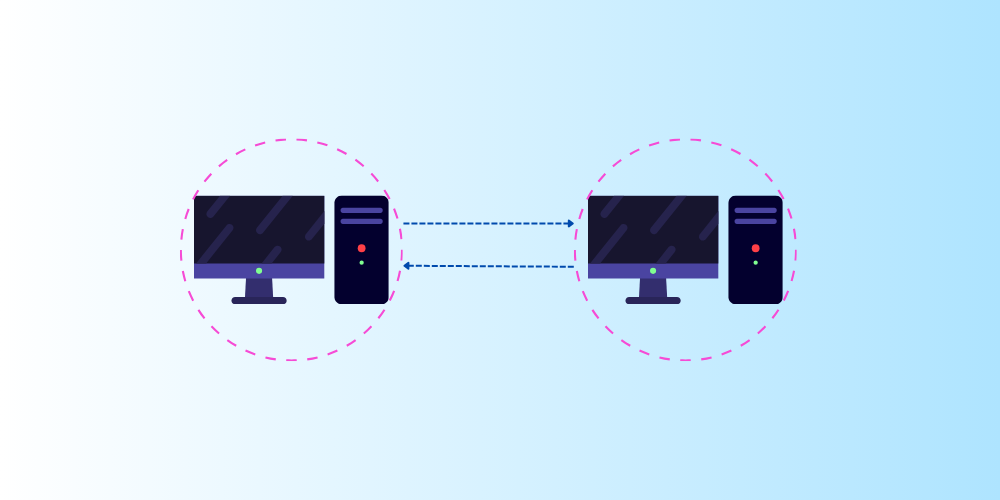 Read-write-own model
Read-write-own modelIn 2008 first appeard the concept of blockchain in a whitepaper published by Satoshi Nakamoto. This groundbreaking proposal outlined a system where value could be transmitted directly between peers, circumventing the need for uncontrollable trusted third parties. Prior to Bitcoin’s emergence, such a concept remained unrealized due to the absence of a central authority to supervise transactions effectively, leaving no feasible means to counteract malicious actions such as unauthorized spending, insufficient balance, and double-spending. Bitcoin, alongside blockchain technology, paved the way for the inception of Ethereum, which introduced smart contracts, further revolutionizing decentralized transactions and digital agreements.
The concept of ‘Web 3’ was introduced by Ethereum co-founder Gavin Wood shortly after Ethereum’s launch in 2014. Gavin articulated a solution to a concern shared by many early cryptocurrency adopters: the Web demanded excessive trust. Essentially, the majority of today’s familiar and utilized web infrastructure depends on placing trust in a select few private companies to prioritize the public’s interests. His proposal endorsed the utilization of blockchain technology to record public information, protect personal privacy and eliminate the need for trusted third parties with smart contracts. This pioneering concept marks the initial integration of blockchain with the Internet, constituting the recognized definition of Web 3 within the cryptocurrency industry.
Web3 endeavors to transfer control of personal data from Web 2.0 corporations to users via decentralized storage, blockchain technology, cryptocurrencies, NFTs, and community-based self-sovreign identity. The user will have the ultimate authority on who has access to their data. It is the beginning of the read-write-own modelThe realization of Web3’s vision, aimed at empowering users with data ownership, has been facilitated by the adoption of cryptocurrency wallets like MetaMask. These wallets serve as secure repositories for keys and digital identities. Users exercise full control over data access by logging into various blockchain applications through their crypto wallet, distinguishing Web3 from the centralized control model of Web 2.0 giants. This approach to accessing and managing data is comparable to using a Facebook account, but with a crucial distinction: users retain absolute ownership and control over their information.
Characteristics of Web3 Technology- Decentralization: ownership is distributed among builders and users, while data storage is decentralized.
- Privacy protection: users possess the right to privacy. authorization is necessary for the application to access user information.
- Permissionless: all individuals can equally engage in Web3 and no one gets excluded.
- Trustless: it relies on blockchain-based consensus mechanism rather then trusted third-parties.
- Immutable: data recorded on the blockchain cannot be modified and is trustworthy.
- Independence: each node can autonomously conduct its operations, free from external influence or control by third parties.
- Interoperability: various protocols and blockchains can be leveraged to drive innovations.
- Native Tokens: users use cryptocurrency for spending and sending money online rather than traditional currencies and payment systems.
During the Web 2.0 era, users have renounced numerous rights in favor of convenience. Companies employ algorithms to exploit personal data, generating profits via targeted advertising and content, and users are left without a share in the profits and a loss of privacy. Content creators face similar risks, with the potential for their works to be deleted or blocked, impeding their ability to profit. Additionally, the centralization of servers renders them susceptible to attacks. Let’s explore the following the benefits of adopting Web3.
Decentralization
- Resilience to Failures: Decentralized systems are more resilient to failures compared to centralized ones. In centralized systems, if a single point of failure occurs (such as a server going down), it can lead to extended disruptions. Instead, decentralized systems distribute data and process it across a network of nodes, reducing the impact of the single point of failure.
- Reduced risk of censorship: Centralized platforms have the authority to censor content and restrict access to information based on their policies or government rules. Instead, decentralized platforms operate on censorship-resistant protocols. Content saved on decentralized networks cannot be easily modified or removed without the consent of network participants. For example in 2017, the Turkish government attempted to block access to Wikipedia in Turkey; however, activists managed to transfer the pages of the site to the decentralized IPFS protocol, effectively making it impossible for the government to block Wikipedia.
- Innovation in digital asset ownership: for example, let’s consider playing a web2 game. When purchasing an in-game item, it would be directly tied to our account. If the game creators were to delete our account, we would lose all our items. Alternatively, if we were to stop playing that game, we would lose the money we invested in purchasing the game items.
Web3 allows for direct ownership of game items through non-fungible tokens (NFTs). No one, not even the game creators, has the power to take ownership of those items away from you. And if you stop playing, you can sell or trade your game items on platforms and recover their value. - Selective access to personal data: let’s imagine Sara, a freelance graphic designer, wants to apply for a remote design project on a decentralized freelancing platform called DecoWork, which operates according to Web3 principles.
Sara is required to provide her credentials and portfolio (a collection of work samples or projects to showcase her skills) to apply for the design project.
Instead of uploading her data directly to DecoWork’s servers, Sara wants to retain ownership of her data and provide authorized access (similar to RBAC) to her portfolio to a potential client, Bob, the project creator.
Here’s how this will be possible:
1. Sara creates a smart contract that defines the terms of access to her portfolio. The contract specifies that Bob can only view her portfolio for the purpose of evaluating if she is suitable for the project and cannot share or use Sara’s work without her explicit consent.
2. The smart contract is uploaded to the blockchain and is tied to Sara’s identity. When Bob wants to see Sara’s portfolio, he sends her a request through the DecoWork platform.
3. Sara receives a notification of Bob’s access request and reviews the terms specified in the smart contract. If she agrees, she will cryptographically sign the request using her private key, authorizing Bob to access her portfolio.
4. Bob’s access to Sara’s portfolio is governed by the terms of the smart contract, ensuring that Sara maintains control over her data and how it is used.
- Access to data with user consent: it is well known that companies access user data to gain financial advantages and that individuals have chosen to forfeit their privacy for the convenience of social network services. However, web3 applications must obtain the user’s permission before accessing their data. The user always has the final say.
- Anonymous addresses: Web3 technology also allows users to create anonymous addresses, making it nearly impossible for third parties to identify a user from their address. This level of privacy and security contrasts with that of traditional financial institutions, where user assets and personal information may be vulnerable to the view of account managers.
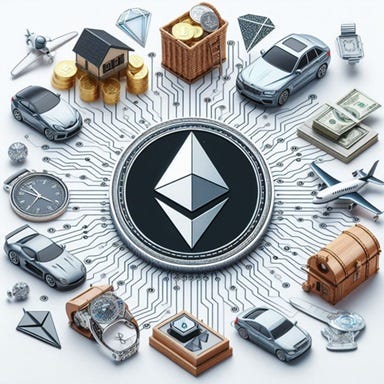
Tokenization involves representing real assets, rights, or utilities as digital tokens on a blockchain. Tokens can represent ownership, access rights, voting power, loyalty points, or any other form of value. Tokenization enables fractional ownership, liquidity, programmability, and interoperability of assets in digital form.
Real-world assets such as real estate, art, commodities, stocks, watches, jewelry, cars, boats, or securities can be tokenized and represented as digital tokens on a blockchain.
Tracking of information.
Can we be sure that the Mona Lisa is the original and not a copy? In reality, it’s not possible to know for sure.
However, today an artist can associate an NFT with their artwork, and the moment it is uploaded to the blockchain, we have certainty about its creator.
Furthermore, since the blockchain is a transparent and immutable ledger, we can be sure that we have purchased the original artwork because we will be able to trace the history of the artwork’s movements from the moment it was created.
Risks and limitations of Web3- Highly dependent on centralized structures: although Web3 aspires to decentralization, currently the Web3 ecosystem largely relies on centralized structures from Web2.
For example, major sources of information and media related to Web3 are centralized platforms like Twitter. Simultaneously, its communities are primarily built on Discord, and development is carried out on GitHub. Additionally, centralized entities like Infura and the AWS cloud platform provide critical services such as APIs and cloud computing.
Dependency on centralized structures could undermine censorship resistance and system resilience, two central properties in the vision of Web3. The need to progress through further developments and create decentralized infrastructures to realize the full potential of Web3 is evident. - High Costs: the high cost of using Ethereum represents a significant challenge for the Web3 ecosystem. The cost of interacting with the main Ethereum network, known as gas fees, can reach $100 or $200 during peak periods, making it unusable for many users.
To address this problem, the Ethereum community is working on various solutions to reduce gas fees and make the network more accessible to a wider audience of users. These solutions include implementing scalability solutions like layer 2, optimizing smart contract code, and developing alternative payment methods. - Scalability: Ethereum, the primary blockchain platform for Web3 applications, faces limitations in transaction processing capacity. With approximately 12 transactions per second, Ethereum frequently encounters congestion, resulting in slow and costly transactions.
To confront this challenge, high-performance public chains like Solana have emerged, offering faster transaction speeds ranging from 3,000 to 4,000 transactions per second. Despite this considerable improvement over Ethereum, Solana has encountered occasional difficulties in achieving consensus among its nodes, raising concerns about its security and reliability.
In contrast, the traditional financial sector has demonstrated the ability to smoothly process thousands of transactions per second over time. According to various sources, Visa processes around 1,700 transactions per second on average, although it claims to be able to support up to 24,000 transactions per second.
Enhancing scalability presents a multifaceted challenge that necessitates the integration of innovative technologies like sharding and off-chain transactions, along with optimizing existing protocols. The success of these endeavors will be pivotal for the advancement and adoption of the Web3 ecosystem, facilitating faster, more secure, and more accessible transactions for users. - High barrier to entry: there are high entry barriers for users who want to use Web3 products. In fact, each user should learn at least how to create their own wallet and understand how to send and receive coins or tokens via the blockchain.
The first thing to learn would be to take self custody of the coins: many users have indeed left their coins on centralized exchanges that then failed (e.g., Mt.Gox and FTX). This is why the saying “not your keys, not your coins” exists.
Secondly, users must securely store the private keys of their wallets, because if someone were to obtain them, they could steal their funds forever. In fact, there is no customer care service that can reimburse them.
Finally, one should learn how to send and receive funds because sending funds to the wrong address means losing them forever, with no possibility of recovery.
I trust that this article has provided clarity on the concept of Web3, which emphasizes the necessity for a paradigm shift towards a more decentralized and user-centric internet making it more secure, transparent and fair. Despite the challenges that lie ahead, the potential for innovation and empowerment within the Web3 ecosystem is substantial. Ongoing endeavors to tackle issues related to scalability, usability, high costs and improve user experience will be pivotal in unlocking the full capabilities of Web3 and shaping the future of the internet.
Resources- Introduction to Web3 — Ethereum
- Understanding the Evolution of the Internet: Web1.0 to Web3.0, Web3 and Web 3 plus
- Bitcoin whitepaper
- Block of Wikipedia in Turkey
- What is Transaction Per Second (TPS): A Comparative Look At Networks
What is Web3 and Why Should You Care was originally published in Coinmonks on Medium, where people are continuing the conversation by highlighting and responding to this story.
